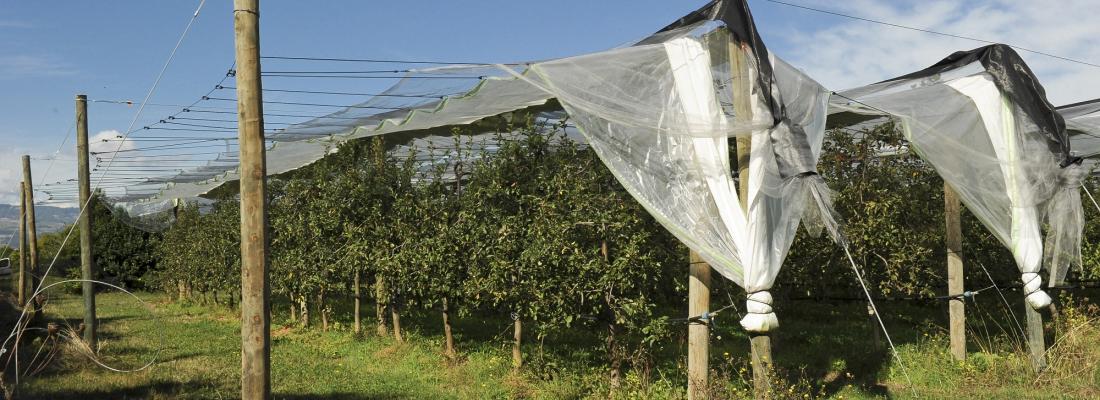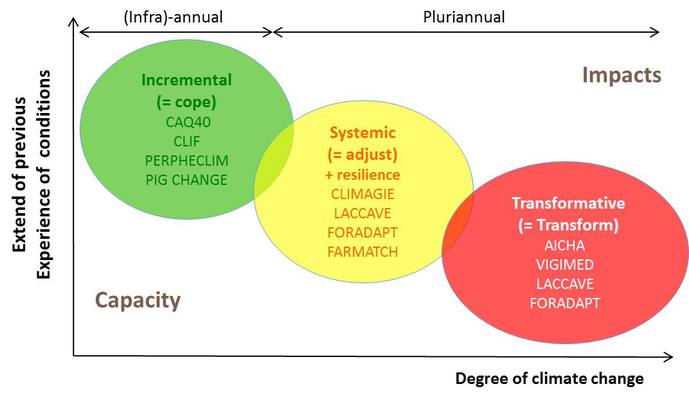Climate change and risks Reading time 3 min
Agriculture and climate change
Published on 11 January 2018

Adapting complex agricultural systems
Adapting to the constraints or opportunities related to climate change applies to different subjects and at different scales: the individual (the plant or animal), the population or the agroecosystem, the field, the farm, the region or the entire sector. Depending on the scale, the actors involved are more or less numerous throughout the value chain, from the livestock producer or farmer to the consumer, from territorial managers to public policy makers, from those working in the sector to the citizen.
Adapting from our current seasons to those of the next century
Once the system to be adapted has been chosen, there is then the question of the timescale which needs to be adopted in order to guarantee production. What tactics can be adopted to cope with an extreme weather event? Should we consider investments that will only be amortized in the medium term to cope with the climatic conditions of the middle of the next century? Or should we consider profoundly changing current land use and imagine how we might reorganise entire agricultural sectors?
In order to provide some answers to these thoroughly pragmatic questions, INRAE has conducted research on different forms of adaptation which encompass short, medium and long-term perspectives and different degrees of possible climate change. Clearly, the relevance of these questions depends very much on the specific life cycle of the crop in question (differences between an annual crop such as wheat or perennial plants such as forest or fruit trees and grapevine) and the resilience of the systems involved, i.e. their ability to return to a normal state after suffering a shock or disruption.
Coping, adjusting or transforming systems
Adaptation can therefore be of three different dimensions, each of which has been treated by the projects supported by INRAE:
• Coping with climate variability or extreme events such as heat waves (PIGCHANGE, CLIMAGIE) or drought (CAQ40) in a reactive and tactical way when a climatic accident disrupts livestock production or crop phenology (PERPHECLIM).
• Adjusting biological systems and system-specific practices; work, for example, on improving the resilience of systems to climate-related hazards (CLIMAGIE, FARMATCH) or diseases (CLIF).
• Transforming systems, changing objectives, the spatial reorganisation of production (FORADAPT), redirecting value chains (LACCAVE) and rethinking the organisation and production within regions (AICHA, VIGIE-MED).

Major scientific advances
The results obtained in these 10 projects illustrate the scientific advances made in these different forms of adaptation, in subjects as diverse as pig breeding, the vine and wine industry, forestry and diseases in arable crops and for scales encompassing farms, the Mediterranean hinterland and irrigated agriculture in India. Some projects have targeted resilience levers for changing agro- or ecosystems, for example by working on intra- or inter-species diversity (CLIMAGIE, FORADAPT). Finally, major scientific advances have been made on the impact of climate hazards on product and seed quality (CAQ40, LACCAVE), which are essential for our food supply.
